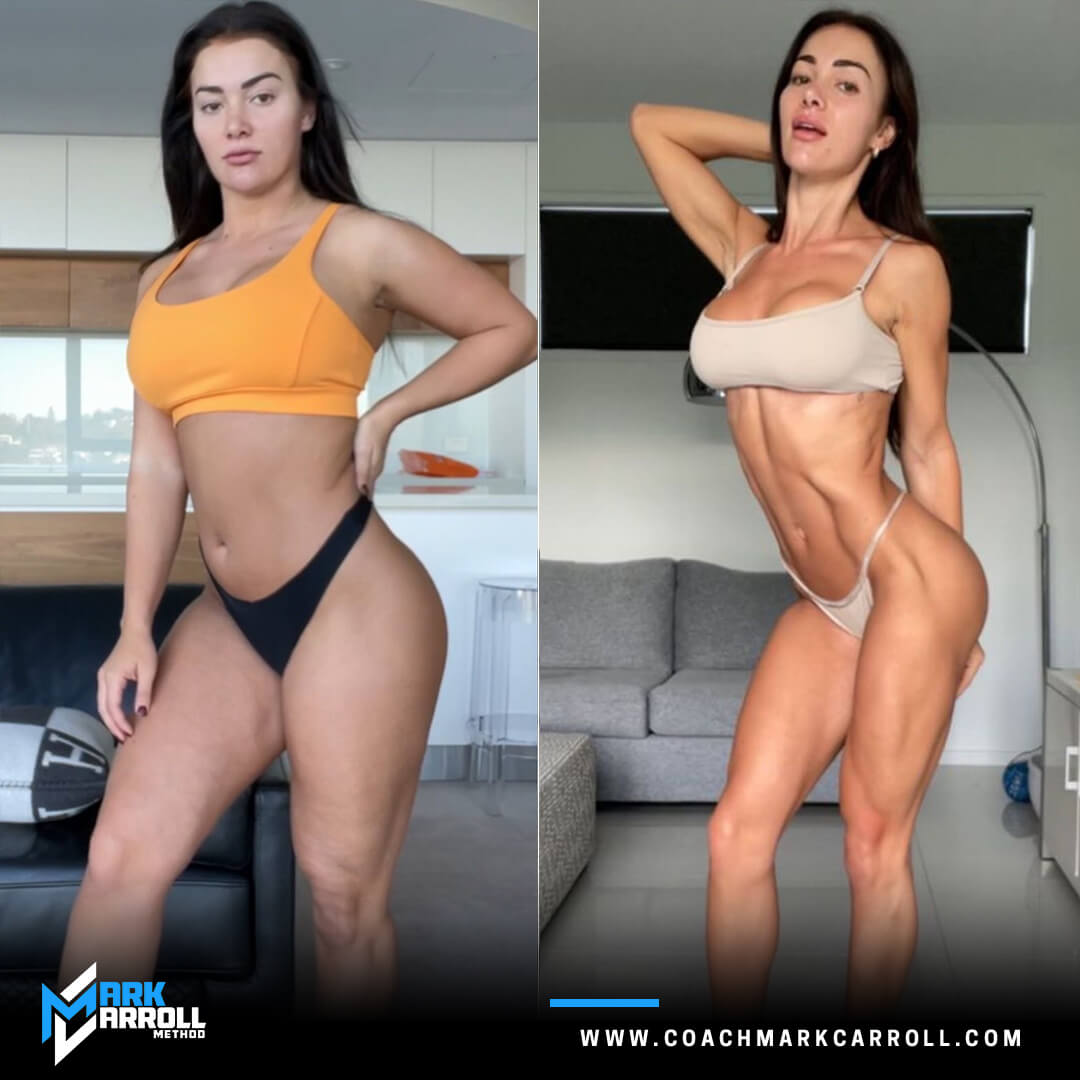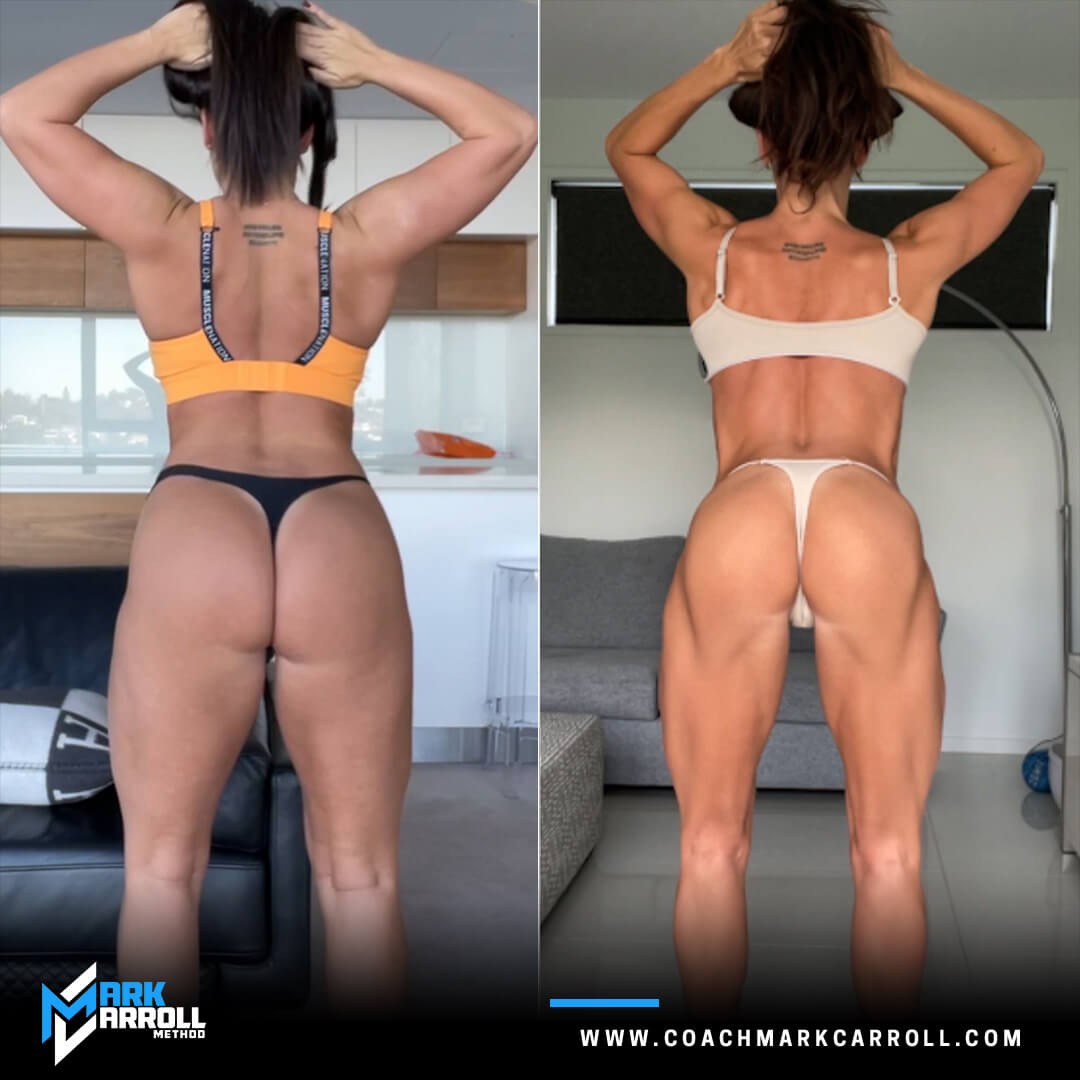Keys To Maintaining Muscle In a Deficit

Have you ever heard that saying about money? ‘It’s not about how much you make, but how much you keep!” This means that the money you earn is not all that important if your taxes and expenses are super high. What you are left with after all those expenses is what you actually keep in your bank account.
This is the same when it comes to weight loss, or more specifically fat loss. We often talk about how much someone loses on the scale, myself included. In reality, it’s not about how much weight specifically you lose, rather, it’s about how much fat mass you lose. It is not just about how much weight you lose on the scale, but also how much muscle mass you maintain in that weight loss.
This is important because in the end, our goal is to lose body fat. Weight loss does not automatically equal pure fat mass lost. Weight loss can also be fluid loss as well as muscle mass lost.
What our goal should be when we diet is fat loss, but also keeping our hard-earned muscle mass. This is not super easy. Anyone who has gotten extremely lean will know the feeling – as you get leaner and leaner, you feel like your muscle mass shrinks right before your eyes.


Recently, my client, Emily Hearn (shown above), lost 16 kg over the 19 week prep for her comp where she won her WBFF Bikini division in the Australian show. Losing 16kg is a lot, especially on a smaller human and over 19 weeks. We needed to lose a lot, fast, in order to have Emily ready for the stage, but we also needed her to keep the muscle we spent years building. In the end, Emily had a drastically improved physique. She was leaner than ever while also having gained a tremendous amount of muscle on her glutes and shoulders.
So how do you have someone lose a lot of weight and ensure it’s predominantly coming from fat mass while maintaining your hard earned muscle like Emily?
Resistance Train
Resistance training is your best friend when it comes to maintaining muscle mass while dieting. A common phrase I like to use when people lift in a cut is to “lift the same way in a deficit as you did when you were lifting in a build.” Oftentimes when people think about fat loss, their training suddenly shifts from a heavy weights focus to a cardio focus only. No! Resistance training should be the foundation of your cutting process. Obviously, nutrition is key for weight loss, but resistance training is the foundation of your muscle retention. In order to maintain muscle mass while lifting in your cut, you should lift the same way you did when you were in a surplus aiming to build muscle.
Not Super High Reps
Hypertrophy can be achieved from a large spread of reps. Very low reps around 3-5 bring about just as much hypertrophy potential as higher reps in the 20-25 rep range when both taken close to failure. Higher reps, however, are actually more fatiguing on your nervous system. Think about it like this – if the last 3-5 reps of a working set lead to the mechanisms behind hypertrophy while you are doing a 5 rep working set, that means pretty much ALL of the reps of that set were useful for hypertrophy. Now, if you are doing 25 reps for a set (like a lot of people do when they switch their training to super high rep circuits), that means the majority of those 25 reps were not all that useful for potentially leading the triggers of hypertrophy adaptations. A lot of those reps you used were just increasing fatigue. If you are using 4-5 days a week of 20-30 rep sets of exercises, that’s a whole lot of reps which were not necessarily needed to maintain muscle mass. I like reps up to 15-20, but I use them sparingly in a cut, not all the time. Try to keep your focus on rep ranges in the 5-15 rep range in a cut as a general guideline for managing fatigue.
Utilise Rest Periods
You know what people commonly associate with fat loss? Sweating. You know what helps sweating? Super short rest periods where your heart rate is beating out of your chest. You know what allows you to lift heavier? Resting longer!
When dieting for fat loss, a key component to maintaining your muscle mass in a cut is keeping your strength up. If you or your client are using 2-3 minute rest periods in a build, then you switch to resting 30 seconds in a cut, of course performance will be lower. You are making it far more difficult to lift the same amount of weight for the same amount of reps by diminishing your rest periods. In a cut, use your rest periods.
Protein
If resistance training is your best friend in a deficit, then protein is your even better best friend. They work in synergy together. Ensuring protein intake stays high is 101 to keep muscle mass in a calorie deficit.
It’s pretty simple. Muscle loss comes from increased muscle protein breakdown. When we are in a calorie surplus, we are creating an anabolic environment for the body to build muscle mass. When we diet in a calorie deficit for fat loss, we are creating a catabolic environment in the body, hence why we lose fat mass and weight in general. We want to, however, lose fat mass and maintain muscle mass. So how can we best counter this catabolic environment? By ensuring protein intake is high to mitigate potential muscle protein breakdown.
General leading nutritionist recommendations for protein intake in a diet is 1.6g – 2.5g per kg of bodyweight. The higher end is probably better if you are leaner. If you have higher body fat, the lower end should be sufficient. These are the ranges some of the leading nutritionists recommend, but use this as an example.
Don’t Do Excess Cardio
Cardio is a tool to help increase calorie expenditure in a fat loss phase. Outside of the obvious health benefits of improved fitness which can be achieved in a surplus with cardio, the primary reason cardio is used by my followers is for fat loss. Increased calorie expenditure to help further drive you into a deficit is a good thing, but it is also dose dependent. Remember, when calories are low, you only have so much energy to use. Ideally, we want to use a lot of this energy for high quality resistance training. This is where we must keep our performance high to do everything we can to maintain muscle mass. Cardio is a great tool, but too much can impact performance, increase fatigue, and even impact hunger levels. A big tip is to use cardio when you need it in a fat loss phase. Do not try and start with 7 days a week off the bat, increase slowly when needed. If you can achieve the desired rate of fat loss with only 1-2 sessions a week, great! Do that. Only increase the frequency when fat loss plateaus. For my clients, I strive to get them as lean as possible with as little cardio as possible. We only increase above 3-4 sessions a week when it’s absolutely needed.
Decrease Intervals End of Cut
Cardio can be done through steady state work or interval work. A 5 second overview of each is that steady state will be a lower heart rate which is maintained around the same level. The heart rate stays elevated but not at a super high level. Calories expended will not be as high as intervals, however, it is far less demanding on the body. Intervals will have short periods of intense sprints which are balanced out with a large drop of intensity and heart rate to allow recovery. Due to the short intense sprints which rapidly skyrocket the heart rate, calorie expenditure will be higher when comparing 30 minutes of intervals versus 30 minutes of steady state cardio. Intervals as said, however, are far more demanding.
Does this mean not to do interval work? No, not at all. But a big tip I often use with clients in their comp preps is that when cals get very low at the end of their prep as they reach incredibly lean levels, fatigue will be higher. Energy coming from their food is low. They have dieted for months, at this point. What does this mean? Potential for muscle loss is highest at this point. This is why during the final weeks of a prep or hard cut when you reach a very low level of body fat, it can be a good idea to switch out interval work for steady state due to it being far less demanding on the body. This can allow for better recovery when cals are low and fatigue is high and a greater potential to still lift at a high level while managing fatigue.
Stress and Sleep Management
Our final key to maintaining muscle mass in a deficit is all about recovery. High quality sleep and managing stress goes a long way. Research has shown that people who sleep more when dieting lose more fat mass and maintain more muscle mass than those who are sleeping far less. Sleeping a solid 7+ hours can dramatically help to improve performance and focus, manage hunger levels, and maintain muscle. A big focus for my clients while dieting is ensuring you aim to get to bed at the same time each night and wake up at the same time each day, if possible. Routine goes a long way here.
Recovery goes hand in hand with sleep. Something I like doing is having clients do things like get massages, read a book at night, meditate, and find other relaxing aspects to focus on in their week. Yes, we want to train hard, but we also want to balance out the stress of low calories and high activity with stress management. A stressed person tends to be a more hungry person, who can find getting in a quality session that much harder.
Your key takeaway is focus on sleep and recovery. Yes, protein and lifting matter, but balance all that training and nutrition out with the ability to unwind and recover.
So there we go guys!
These are some of my absolute essential strategies to maintain muscle mass in a calorie deficit.
Remember, it’s not about how much weight we lose. It’s about how much muscle mass we can keep and how much body fat we can lose in a deficit.
Hope that helps!
Coach Mark Carroll







